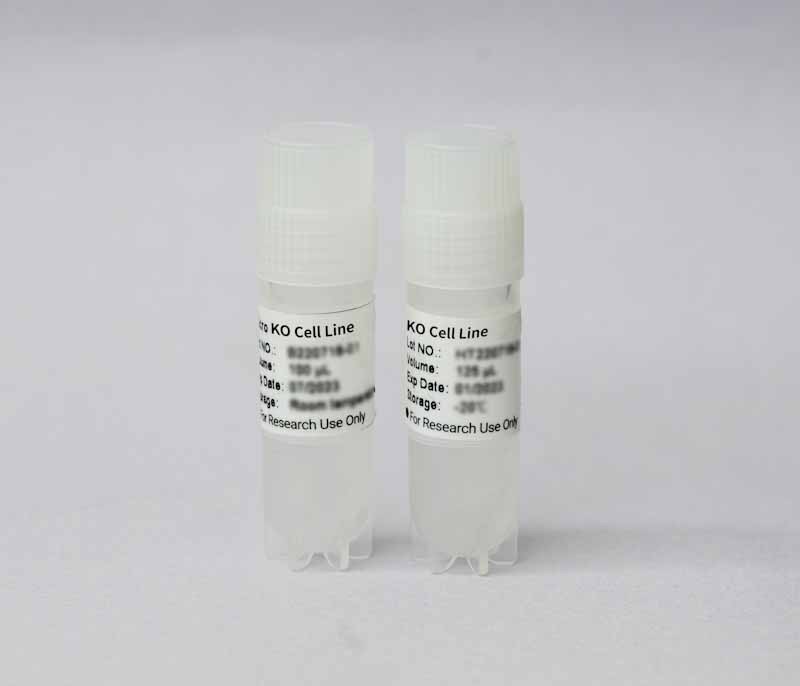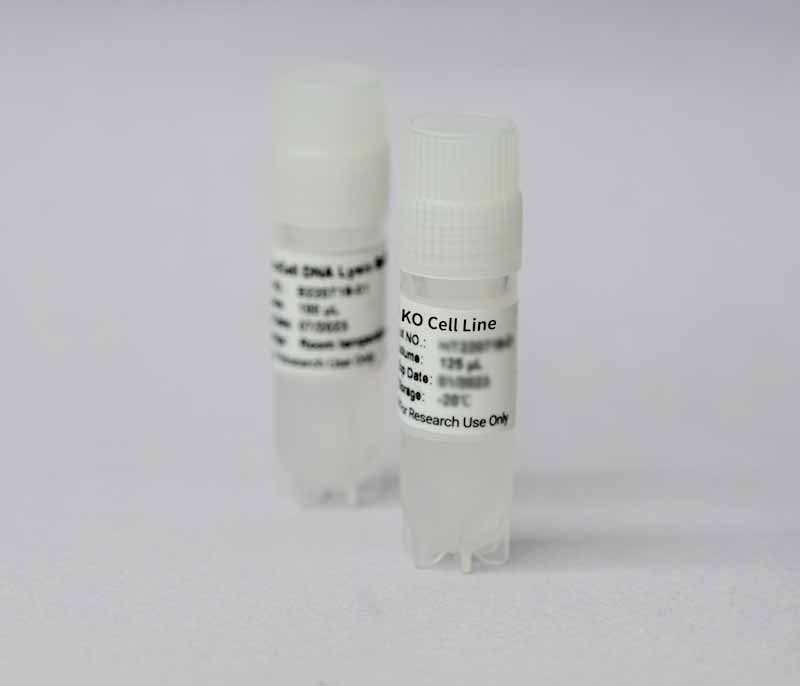GUSB Knockout cell line ( Hela)
Price :
$2200
$3000
Catalog No. :
VKO5B911
Size :
1*10^6
Lead time :
2-3 weeks
This GUSB KO cell line is made by CRISPR/Cas9 technology. The target gene is full allelic knockout. It is available in stock, and the lead time is 2-3 weeks. Please feel free to contact us for more cell information and order placing.
Product name
GUSB Knockout cell line ( Hela)
Catalog No.
VKO5B911
Gene
GUSB
Gene ID
2990
Aliases
BG; MPS7
Genotype
Full-allele Knockout
Host cell line
Human Cervical Carcinoma Cell Line (HeLa)
Adherent /Suspension
Adherent
Morphology
Epithelial-like
Biosafety level
1
STR profiling
D5S818: 11,12; D13S317: 12,13.3; D7S820: 8,12; D16S539: 9,10; vWA: 16,18; THO1: 7,7; Amelogenin: X,X; TPOX: 8,12; CSF1PO: 9,10
Research area
Cancer-related genesDisease related genes
Enzymes
Human disease related genes
Metabolic proteins
Plasma proteins
Potential drug targets
Vitro Biotech offers cell engineering products and services about KO cells, Luciferase cells, Cas9 expressing cell lines, and various stable cell lines.






2.Remove the frozen cells from the dry ice packaging and immediately place the cells at a temperature below -130°C, preferably in liquid nitrogen vapor, until ready for use. Please do not store at -80°C. Storage at -80°C may result in loss of viability.
2.Gently agitate the vial in a 37°C water bath to thaw. Please keep the O-ring and cap out of the water. Thawing should be rapid (approximately 1-2 minutes).
3.Remove the vial from the water bath as soon as the contents are thawed, and decontaminate by spraying with 70% ethanol or wiping with an alcohol cotton pellet. All of the operations from this point on should be carried out in the hood and under strict aseptic conditions.
4.Transfer the vial contents to the step 1 centrifuge tube containing 6-7 mL complete culture medium. And spin at 1100 rpm for 4 mins at room temp to collect the cells.
5.Resuspend cell pellet with 1ml recommended complete medium. And dispense into a T25 flask (or 6 cm culture dish) containing 4 mL of complete medium. (Note: It is suggested that, prior to the addition of the vial contents, the culture vessel containing the complete growth medium be placed into the incubator for at least 15 minutes to allow the medium to reach its normal pH 7.0 to 7.6.)
6.Incubate the culture at 37°C in a suitable incubator. A 5% CO2 in air atmosphere is recommended if using the medium described on this product sheet.
2.Rinse the cells 1-2 times with 1xPBS (2-3mL for T25 flask, increase or decrease the amount needed proportionally for culture vessels of other sizes) to remove residual medium and serum.
3.Add 1 mL of Trypsin-EDTA solution to T25 flask (increase or decrease the amount needed proportionally for culture vessels of other sizes) allow trypsin completely cover the cells, then place the flask into the incubator and incubate for 1-2 mins (if cells are hard to detach, allow appropriate extension of incubation), and observe cells under an inverted microscope until cell layer is dispersed. (Note: To avoid clumping do not agitate the cells by hitting or shaking the flask while waiting for the cells to detach.)
4.Add 2 times of trypsin vloume of complete growth medium to stop digestion, and aspirate cells by gently pipetting.
5.Transfer the cell suspension with a 10 mL pipette into a 50 mL centrifuge tube, rinse the residual cells from the flask with PBS , then collect to the centrifuge tube.
6.Centrifuge at 1100 rpm for 4 mins at room temp. Then remove and discard the supernatant and resuspend the cells with 2 mL of complete medium.
7.Dispense the cells into a suitable culture vessel containing corresponding amount of complete medium.
8.Incubate cultures at 37°C.